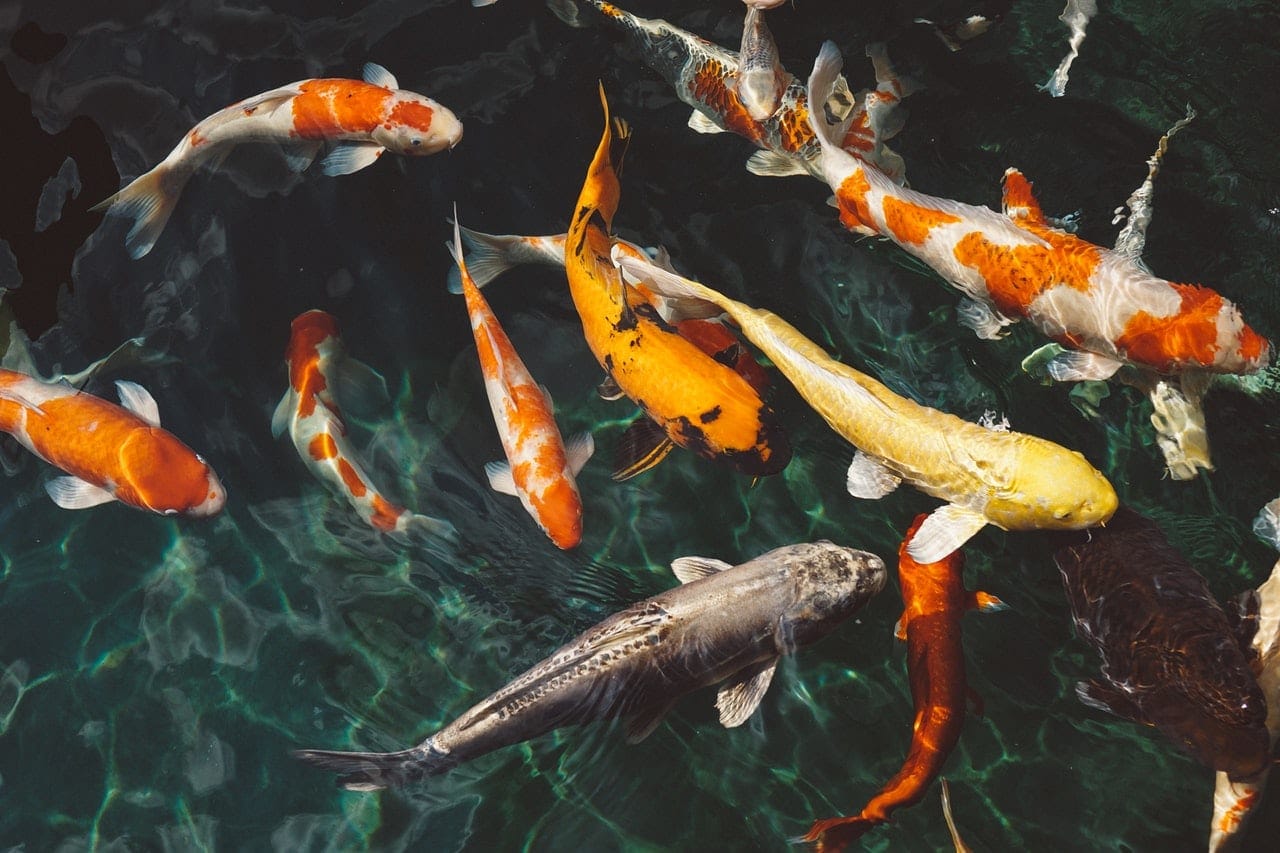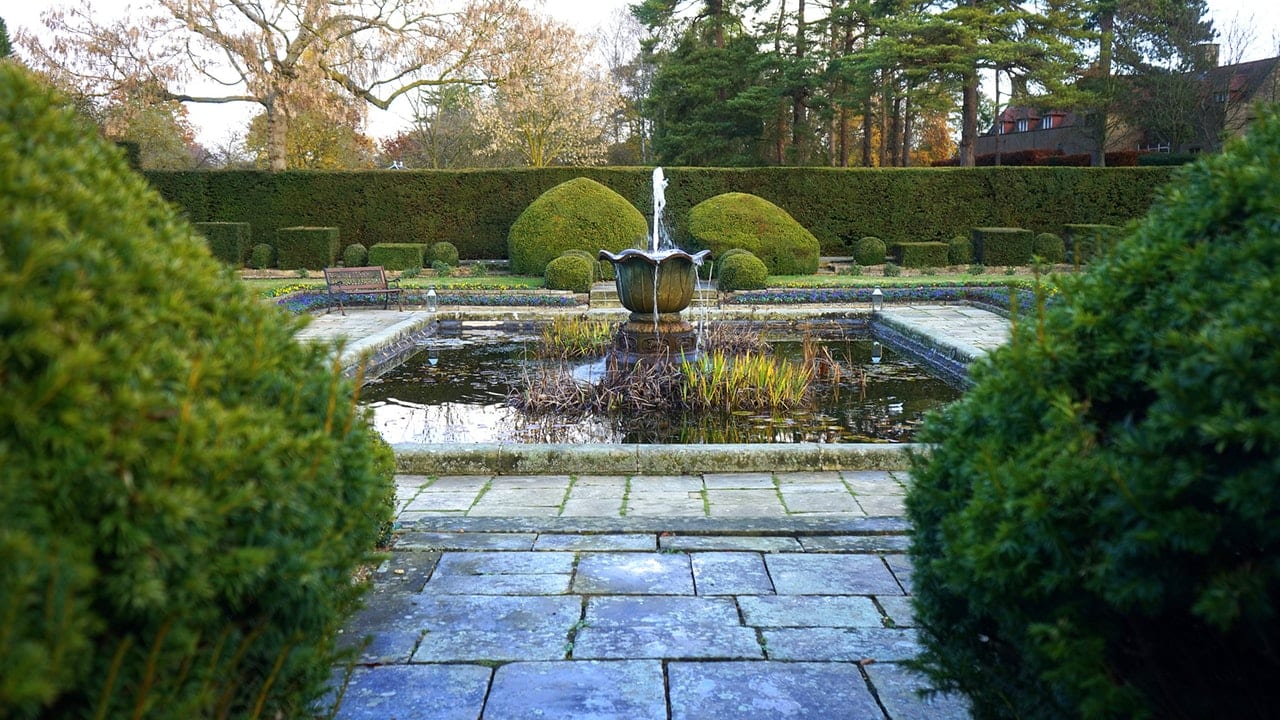Adding the best species of fish to your backyard lake makes it more alive and gives it a natural look. But it’s not possible to just add any fish you like. You have to do some research before you do that. It’s not enough to have only a pond aerator pump. Take into consideration conditions such as climate that you live in, so that your fish hardiness is enough to survive the winter. It’s essential to know that different fish have various requirements. Keep in mind that they’ll have to handle your pond conditions, so make sure they can live in specific water pH or temperature. Read about each fish type and decide whether it’s good to have them in your pond or not.

Koi carp
Koi carp is one of the most common pond fish species. It comes from Japan and thanks to a huge amount of patterns, and impressive colours is one of the best looking pond fish species. It’s easy to provide suitable conditions as koi carp live in wide water temperatures – from 15 to 25 °C. They feel the best when water pH is between 7,5 to 8.
If you’re thinking of having them your pond should be at least 1 meter deep as they can grow up to 80 centimetres and, If you love interacting with your fish, you should purchase koi carp because you can teach them how to eat out of a human’s hand. If you know that there are natural predators, such as herons, living in your area, it’s best if you protect fish with nettings. Koi carp life expectancy is up to 40 years so provide them safeties.
Pumpkinseed fish
These popular North American pond fish grows up to 25 centimeters long and 15 cm tall. They’re feeding on insects and larvae, but they also eat other fish eggs, so be careful and keep it in mind. They’re active and most happy in the group. To provide a good living condition to this species, make sure that your water is between 20 to 24 °C and alkaline pH of 7.
Goldfish
Probably the most popular type of fish in the world. They look fabulous, are cheap and perfect for backyard pond! They’re reproducing fast so you’ll have to keep their population under control. Due to hibernation purposes, your backyard lake should be at least 1 meter deep if you’re planning to have them. If you already own koi carp, you don’t even have to purchase different types of food, as they both belong to the carp family and their diet is almost the same. Goldfish feel the best in waters with 7,5 pH and temperature between 20 to 22 °C. They live up to 30 years; however, they are natural prey to cats, herons, and snakes, so make sure you protect them appropriately.
Ide (orfe)
Very popular pond fish. They’re the most active on the surface, so it’s worth having them as they are visually appealing. They prefer being in groups of 5. Ides are sensitive when it comes to water composition. Golden orfes are often used as “guinea pigs” in tests determining water quality. A good pond aeration system is a must if you decide to have them because they need a high level of oxygen in the water. They tolerate a wide range of water temperatures between 10 to 25 °C and a pH of 7,5.
Fathead minnow
These little fish don’t feel good alone. They prefer being in a school of 5 or more. Fathead minnow has a short life expectancy between 1-2 years. They aren’t needy when it comes to the quality of water and can live in harsh conditions. There are reports of finding them in drainage sites. Fathead minnow is an opportunist feeder – it means they can eat almost everything, although their favourite food is algae and insects.
Siamese algae eaters
According to their name, they love eating algae which makes them very needed in the pond ecosystem. However, if you already have calm species in your pond, you have to take into consideration, that they’re very lively and might stress out more docile fish. During winter, you have to take them home because their desired water temperature is between 20 to 26 °C.
Red shiners
They are tiny (up to 8 centimeters), silver, freshwater fish with red or orange fins. Although they prefer living in warm waters around 20-25 °C, they are able to survive even in freezing cold temperatures, like -20 °C. If the temperature drops below 15 °C, you should bring them indoors. Their life span is about 3 years. They’re eating larvae, algae, and eggs of native fish as well as aquatic and terrestrial invertebrates. Because of their fast reproduction, you should never release them, or else they might become a serious problem in the wild.
Appropriate choice of best species of fish will let you avoid many problems in the future. Do it wisely once, and enjoy your perfect and vibrant pond that will surely become one of the most favourite places at your home.







